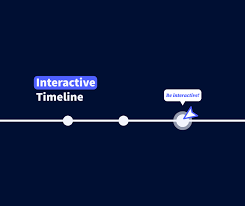Introduction
The digital revolution has transformed virtually every aspect of our lives, and education is no exception. Traditional history classes, once reliant on textbooks and lectures, are now embracing technology to create more engaging, interactive, and personalized learning experiences. From digital archives and virtual reality to online collaboration tools and educational apps, the ways we teach and learn history are evolving rapidly. This article explores the various ways the digital revolution is transforming history class, highlighting innovative methods and tools that are making history more accessible and engaging for students.
The Rise of Digital Archives

Accessing Historical Documents Online
One of the most significant advancements in history education is the widespread availability of digital archives. Institutions like the National Archives, the Library of Congress, and the Digital Public Library of America provide online access to a vast array of primary sources, including letters, photographs, speeches, and official documents. These resources allow students to explore history firsthand, fostering critical thinking and analytical skills.
Benefits of Digital Archives
Digital archives offer numerous benefits for history education. They provide easy access to a wealth of information that might otherwise be difficult or impossible to obtain. Students can engage with primary sources directly, developing a deeper understanding of historical events and perspectives. Additionally, digital archives often include advanced search tools, making it easier for students to find relevant materials.
Virtual Reality and Immersive Learning
Stepping into History
Virtual reality (VR) has the potential to revolutionize history education by providing immersive learning experiences. With VR, students can virtually visit historical sites, explore ancient civilizations, and witness significant events as if they were there. This level of immersion can make history more engaging and memorable.
Examples of VR in History Education
Several VR applications are designed specifically for history education. For instance, Google Expeditions allows students to take virtual field trips to places like the Roman Colosseum, the Great Wall of China, and the ruins of Pompeii. Similarly, TimeLooper offers immersive experiences that transport students to historical events such as the Battle of Gettysburg or the D-Day landings.
Interactive Timelines and Maps
Also Read How to Sell Your Products on Jumia: A Step-by-Step Guide
Visualizing History
Interactive timelines and maps are powerful tools for visualizing historical events and trends. These digital tools allow students to see how events unfold over time and understand their geographical context. Interactive timelines can include multimedia elements such as videos, images, and hyperlinks, providing a richer learning experience.
Creating Interactive Timelines
Teachers can use tools like TimelineJS or Tiki-Toki to create interactive timelines for their history lessons. These platforms enable educators to incorporate multimedia elements and customize the timeline’s appearance. Students can also create their own timelines as part of assignments, helping them to better understand the sequence and context of historical events.

Educational Apps and Games
Gamifying History
Educational apps and games are making history learning more interactive and fun. By gamifying historical content, these tools can increase student engagement and motivation. Games often involve solving puzzles, completing missions, or answering questions, providing an active learning experience.
Popular History Apps and Games
Several apps and games have gained popularity for their effectiveness in teaching history. For example, “Civilization VI” is a strategy game that allows players to build and manage a civilization through different historical periods. “Mission US” is an interactive role-playing game where students assume the roles of historical characters and make decisions that impact the storyline.
Online Collaboration and Discussion
Enhancing Student Engagement
Online collaboration tools enable students to work together on history projects, share ideas, and discuss historical topics. Platforms like Google Classroom, Padlet, and Microsoft Teams facilitate group work and communication, allowing students to collaborate regardless of their physical location.
Virtual Classrooms
Virtual classrooms provide a space for students to participate in discussions, ask questions, and engage with historical content in real-time. Teachers can use video conferencing tools like Zoom or Google Meet to conduct live history lessons, bringing a sense of immediacy and interactivity to the classroom.
Digital Storytelling and Multimedia Projects
Telling History Through Stories
Digital storytelling combines traditional narrative techniques with digital tools to create compelling history presentations. Students can use multimedia elements such as images, audio, and video to tell historical stories, making the content more engaging and relatable.
Tools for Digital Storytelling
Tools like Adobe Spark, WeVideo, and Storybird enable students to create their own digital stories. These platforms offer templates and editing tools that simplify the process of creating multimedia presentations. Digital storytelling projects can help students develop research, writing, and technical skills.
Podcasts and Audio Learning
Learning on the Go
Podcasts have become a popular medium for learning about history. They provide a convenient way for students to engage with historical content while commuting, exercising, or relaxing. History podcasts often feature expert interviews, in-depth analyses, and storytelling, offering a rich auditory learning experience.
Popular History Podcasts
Some popular history podcasts include “Hardcore History” by Dan Carlin, which offers deep dives into historical events and figures, and “The History Extra Podcast” by the BBC, which covers a wide range of historical topics. Teachers can incorporate podcast episodes into their lessons or assign them as homework to supplement traditional readings.
Augmented Reality in History Education
Enhancing the Real World
Augmented reality (AR) overlays digital information onto the real world, providing an interactive and immersive learning experience. AR can bring historical artifacts, maps, and documents to life, allowing students to explore them in detail.
AR Applications for History
Apps like “AR Flashcards” and “HistoryView VR” use AR to enhance history lessons. For example, “HistoryView VR” offers virtual tours of museums and historical sites, while “AR Flashcards” provide interactive 3D models of historical objects. These tools can make history lessons more engaging and interactive.
Online Courses and MOOCs
Expanding Learning Opportunities
Massive Open Online Courses (MOOCs) and other online courses offer students the opportunity to learn about history from top universities and experts. Platforms like Coursera, edX, and Khan Academy provide a wide range of history courses that students can access for free or at a low cost.
Benefits of Online Courses
Online courses offer flexibility and convenience, allowing students to learn at their own pace. They often include video lectures, readings, quizzes, and discussion forums, providing a comprehensive learning experience. MOOCs also offer opportunities for students to earn certificates and credentials.
Incorporating Social Media
Engaging with History in Real-Time
Social media platforms like Twitter, Instagram, and Facebook can be powerful tools for engaging students with history. Educators can use these platforms to share historical facts, articles, and resources, as well as to facilitate discussions and debates.
Historical Hashtags and Campaigns
Using historical hashtags and campaigns, teachers can connect students with a broader community of history enthusiasts. For example, #OTD (On This Day) posts highlight significant historical events that occurred on a particular date. Participating in such campaigns can make history feel more relevant and immediate to students.
Enhancing Research Skills
Access to Digital Libraries and Databases
Digital libraries and databases provide students with access to a wealth of scholarly materials, including books, journals, and articles. Platforms like JSTOR, Google Scholar, and Project MUSE offer extensive collections that can support history research projects.
Teaching Digital Literacy
Teaching students how to effectively navigate and evaluate digital resources is essential for developing strong research skills. Educators can provide guidance on how to identify credible sources, use search engines efficiently, and cite digital materials correctly.
Personalizing History Learning
Adaptive Learning Technologies
Adaptive learning technologies use data and algorithms to customize learning experiences based on individual student needs. These tools can provide personalized feedback, adjust the difficulty of tasks, and offer additional resources to support student learning.
Benefits of Personalization
Personalized learning can increase student engagement and achievement by addressing individual strengths and weaknesses. It allows students to progress at their own pace and focus on areas where they need the most support.
Also Read Long Distance Love: Keeping the Spark Alive Across the Miles
Creating Inclusive History Classes
Representing Diverse Perspectives
The digital revolution has made it easier to access and incorporate diverse perspectives into history lessons. Educators can use digital tools to highlight the contributions and experiences of marginalized groups, providing a more inclusive and accurate representation of history.
Using Technology to Address Bias
Technology can help address biases in history education by providing access to a wider range of sources and viewpoints. Digital tools can support critical analysis and encourage students to question dominant narratives and consider alternative perspectives.
The Future of History Education
Embracing Innovation
The digital revolution in history education is still in its early stages, and the future holds exciting possibilities. Emerging technologies like artificial intelligence, machine learning, and blockchain have the potential to further transform how we teach and learn history.
Preparing for Future Challenges
As technology continues to evolve, educators must stay informed about new tools and best practices. Continuous professional development and a willingness to experiment with innovative methods are essential for preparing students for the future.
Conclusion
The digital revolution is transforming history class in ways that make learning more engaging, interactive, and personalized. From digital archives and virtual reality to educational apps and social media, the tools and methods available to educators are expanding rapidly. By embracing these innovations, teachers can create dynamic and inclusive history lessons that resonate with students and foster a lifelong love of learning. As we move forward, it is essential to continue exploring new ways to integrate technology into history education, ensuring that students are well-equipped to understand and appreciate the complexities of our past.
FAQs
1. How can virtual reality enhance history education?
Virtual reality can enhance history education by providing immersive experiences that allow students to virtually visit historical sites, explore ancient civilizations, and witness significant events, making history more engaging and memorable.
2. What are some popular educational apps for teaching history?
Popular educational apps for teaching history include “Civilization VI,” a strategy game that covers different historical periods, and “Mission US,” an interactive role-playing game where students assume the roles of historical characters.
3. How can online collaboration tools enhance history lessons?
Online collaboration tools like Google Classroom and Microsoft Teams enable students to work together on history projects, share ideas, and discuss historical topics, enhancing engagement and fostering teamwork.
4. What are the benefits of digital storytelling in history education?
Digital storytelling allows students to use multimedia elements to create compelling history presentations, making the content more engaging and relatable while developing research, writing, and technical skills.
5. How can podcasts be used in history education?
Podcasts provide a convenient way for students to learn about history on the go. They can feature expert interviews, in-depth analyses, and storytelling, offering a rich auditory learning experience that supplements traditional readings.


